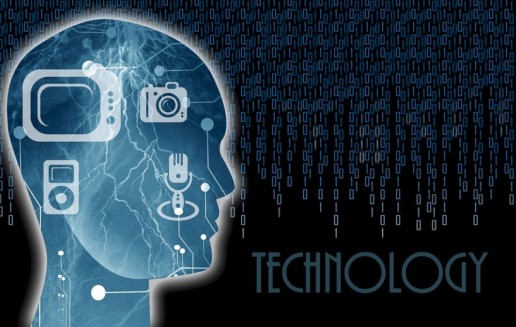Employers Need to Protect Benefit Plans Against Cyberattacks
Is your employee benefits plan properly protected from cyberattacks? Here is a great article by Marlene Y. Satter from Benefits Pro on why employers must make sure that their employee benefits program is protected from cyberattacks and data breaches.
Think only credit card data and bank accounts are the targets of cyberattacks? Think again—because employee benefits data is in the hackers’ crosshairs.
That’s according to a report by the Society for Human Resource Management, which says that attacks on benefit plans can result in more than just loss of data for employers who fail to safeguard the information.
The report quotes Neal Schelberg, a partner with law firm Proskauer Rose in New York City, saying at the International Foundation of Employee Benefit Plans’ 2017 Washington Legislative Update in Washington, D.C. that employee health and retirement plans “are big targets and particularly susceptible to cyberattacks,” and warning employers to defend their plans against hacking attempts.
Schelberg pointed to some major attacks, including a June 2016 hit on more than 90 deferred-compensation retirement accounts of Chicago municipal employees. Hackers not only got personal information, but managed to pull money from 58 accounts, with the city losing $2.6 million that had to be replaced in participant accounts and also providing credit monitoring services to account holders.
Another big hit the very next month targeted a grocery workers union pension plan in St. Louis, with hackers demanding a three-bitcoin (about $2,000) digital currency ransom to return control of the United Food and Commercial Workers (UFCW) Local 655 pension plan’s computer servers.
Among the data at risk were employee names, birthdates, Social Security numbers and bank information. While the union refused to knuckle under and pay ransom (it had a backup system), it did end up footing the bill for a year of credit monitoring and theft restoration services.
But in another case, the University of Massachusetts Amherst was on the hook for a $650,000 penalty and had to follow a corrective action plan after a malware infection targeting the university's employee health care plan exposed the sensitive health information of 1,500 people in a potential violation of the Health Insurance Portability and Accountability Act (HIPAA).
Why so much? The Department of Health and Human Services found that the university had failed to accurately assess the risk of malware infection and adopt procedures to secure its data.
According to Schelberg, benefit plans “are particularly susceptible to cyber-risks because they store large amounts of sensitive employee information and share it with multiple third parties.” And even though security measures may not be foolproof, cyber-risks “can be managed.”
It could be argued, he said, that it’s actually within a plan trustee's fiduciary duties not only to prepare for a possible cyberattack but also to ensure that any breach results in as little exposure, and cost, as possible.
Some actions he suggested sponsors take to protect plan data include the following:
- Developing and implementing a framework to address cybersecurity issues
- Addressing third-party vendor vulnerabilities that could add risk, especially for electronic transfer of sensitive data to third parties
- Backing up sensitive data, then storing it off network where it is not accessible to hackers
- Boosting passwords, including adding multifactor authentication for accessing data systems
- Increasing investment in security software and systems
- Involving boards of directors more directly in security matters
- Considering the purchase of cyberliability insurance
Sponsors must also be current on the HIPAA requirements for notification of people whose health information may have been breached, even if a third party is involved, as well as for ERISA requirements for notification and for other actions in the event of a security breach.
And in the case of ERISA, the process could be far more complicated than sponsors believe.
In the report, Kristen Mathews, another partner in Proskauers New York City office, was cited saying that benefit plans are affected by the laws of states where health plan enrollees or retirement plan participants live—not just the state where the company is headquartered or where the plan is administered.
She pointed out that pension plans could be affected by security laws in any state in which a retiree or beneficiary resides.
See the original article Here.
Source:
Satter M. (2017 June 9). Employers need to protect benefit plans against cyberattacks [Web blog post]. Retrieved from address https://www.benefitspro.com/2017/06/09/employers-need-to-protect-benefit-plans-against-cy?ref=hp-news&page_all=1
Losing Sleep Over Benefits Technology? Get Over It!
Are you having a hard time figuring out all the different technologies associated with your benefits program? Read this great article by Linda Keller from SHRM on how to navigate through the different technologies accociated with you employee benefits program .
It’s easy to get caught up wanting to deliver a sophisticated platform to engage your workforce. Many benefits technology solutions promise to make employees smarter consumers of health care through slick recommendation engines, bots, and avatars delivered on smart phones.
I advise you to keep these three things in mind when you evaluate benefits technology:
See the original article Here.
Source:
Keller L. (2017 May 23). Losing sleep over benefits technology? get over it! [Web blog post]. Retrieved from address https://blog.shrm.org/blog/losing-sleep-over-benefits-technology-get-over-it
Helping Your Employees Protect Against Identity Theft
Are you doing enough to help your employees protect themselves from identity theft? Make sure to take a look at this article by Irene Saccoccio from SHRM on what employers can do to protect their employees from identity theft.
Social Security is committed to securing today and tomorrow for you and your employees. Protecting your identity and information is important to us. Security is part of our name and we take that seriously.
Identity theft is when someone steals your personally identifiable information (PII) and pretends to be you. It happens to millions of Americans every year. Once identity thieves have your personal information they can open bank or credit card accounts, file taxes, or make new purchases in your name. You can help prevent identity theft by:
- Securing your Social Security card and not carrying it in your wallet;
- Not responding to unsolicited requests for personal information (your name, birthdate, social security number, or bank account number) by phone, mail, or online;
- Shredding mail containing PII instead of throwing it in the trash; and
- Reviewing your receipts. Promptly compare receipts with account statements. Watch for unauthorized transactions.
It is important that your employees take the necessary steps to protect their Social Security number. Usually, just knowing the number is enough, so it is important not to carry your Social Security card or other documents unless they are needed for a specific purpose. If someone asks for your employees’ number, they should ask why, how it will be used, and what will happen if they refuse. When hired, your employees should provide you with the correct Social Security number to ensure their records and tax information are accurate.
If your employees suspect someone else is using their Social Security number, they should visit IdentityTheft.gov to report identity theft and get a recovery plan. IdentityTheft.gov guides them through every step of the recovery process. It’s a one-stop resource managed by the Federal Trade Commission, the nation’s consumer protection agency. You can also call 1-877-IDTHEFT (1-877-438-4338); TTY 1-866-653-4261.
Your employee should also contact the Internal Revenue Service (IRS), and file an online complaint with the Internet Crime Complaint Center at www.ic3.gov.
Don’t let your employees fall victim to identity theft. Advise them to read our publication Identity Theft and Your Social Security Number or read our Frequently Asked Questions for more information. If you or an employee suspects that they’re a victim of identity theft, don’t wait, report it right away!
See the original article Here.
Source:
Saccoccio I. (2017 May ). Helping your employees protect against identity theft [Web blog post]. Retrieved from address https://blog.shrm.org/blog/helping-your-employees-protect-against-identity-theft
Is Social Media Putting Employees’ Health, Safety at Risk?
Do your employees know about all of the risks that can come from their social media? Find out how social media can affect your employee's safety and health in this article from Employee Benefit News by Jill Hazan.
The issue of personal online safety has finally crossed over into the healthcare arena — and employers need to step up and learn to best educate employees about keeping them safe.
A recent article in the Journal of the American Medical Association Pediatrics, “Parental Sharing on the Internet: Child Privacy in the Age of Social Media and the Pediatrician’s Role,” highlights how parents who post information about their children on social media put them at greater risk for identity theft. In addition, this trend toward oversharing compromises a child’s protected health information. What might happen when that child applies for a job in the future and a simple internet search reveals health information she would not want an employer to know?
While HIPAA protects the confidentiality of an individual’s medical records, it doesn’t provide comprehensive protections outside the healthcare environment. The laws around the privacy rights of children relative to their parents’ online disclosures are still evolving. The article recommends that pediatricians ask parents about their social media habits to help keep children safe and their data private. It is a natural extension that all primary care providers should be asking patients about social media behaviors, as the issues of identity theft and data privacy are relevant to children and adults alike.
This recommendation is increasingly significant from an employee benefit perspective.
So what should employers do?
Employers routinely provide healthcare benefits to employees. If health plans and physicians are acknowledging and addressing the risks of social media from a privacy and security perspective, shouldn’t employers extend that focus into the workplace? With the continued employer emphasis on wellness, it is incumbent on health plans and employers alike to educate employees on online security and the risks of identity theft.
There are a variety of resources and benefits that employers can access to assist employees in navigating the online world safely. A series of well-structured, engaging seminars on identity theft and online security that combine real-life stories with actionable advice are effective in educating employees and changing behaviors. Online tutorials, like those provided by the Center for Identity at the University of Texas, Austin, can guide employees on setting proper privacy settings on social media sites, such as Facebook, Twitter, LinkedIn and Pinterest.
Identity theft protection plans provide monitoring and restoration services, as well as education to help keep employees and their families secure. EAPs may provide guidance on identity theft and counseling for victims. Comprehensive legal benefit plans provide legal advice and representation for victims of identity theft. Employers may also provide employees access to online data protection tools for use at work and home with features that encrypt communication and block malware and phishing attempts.
Employees need to understand how to navigate the social media and online environment to keep their families safe. Identity theft of a family member affects more than just one person. It can register an emotional, physical and financial toll on the entire family. Employers need to structure a comprehensive approach to managing the health and wellness of employees as it relates to their online behaviors. A program with a combination of employee benefits, from healthcare to identity theft protection benefits, supplemented by onsite employee education, will support the goals of the health plan and, ultimately, the organization’s overall business objectives.
See the original article Here.
Source:
Hazan J. (2017 May 1). Is social media putting employees' health, safety at risk? [Web blog post]. Retrieved from address https://www.benefitnews.com/opinion/is-social-media-putting-employees-health-safety-at-risk?feed=00000152-18a4-d58e-ad5a-99fc032b0000
Photo Credit: HowToStartABlogOnline.net
7 Questions to Ensure Successful Benefit Technology Purchases
Do you need help figuring out your technology needs for an employee benefits program? Check out this interesting article by Veer Gidwaney from Employee Benefit Adviser about which technology you will need for your employee benefits program.
From quality to data integration, there are many factors to consider when purchasing benefit administration technology. With employers increasing turning to their adviser for guidance, here are some key questions advisers should make sure their client’s tech acquisition teams can answer:
1) How will you ensure data quality is maintained during the migration to the new system? Be it a mistyped entry, or incomplete form, errors are bound to happen in open enrollment, and if they’re not caught during implementation process, errors can go unnoticed for months or longer. This means inaccuracies in carrier files, delays in enrollment processing, and additional back-and-forth between you and your client or the carrier.
Don’t rely on human eyes to scan spreadsheets for potential errors, it’s 2017. Before you take the plunge with a technology partner, understand their data validation and backup data quality check processes to catch and correct errors before they’re entered into your system of record.
2) Will this technology require a printer or a fax machine for my team or my clients?
No benefits or HR platform should require any manual paperwork. It’s time-consuming, and more prone to human error, yet many benefits systems still rely on paper-based processes to run an enrollment or onboard an employee. Take a stand, for your team, your clients, and their employees.
Make sure you see a demo of the onboarding and enrollment process from start to finish before partnering with a technology platform, and expect employees and HR to demand the same expectations based on interacting with any other technology experience in their lives, at home or work. Does it look and feel like a modern experience? Is buying insurance as intuitive as any e-commerce experience an employee would be used to? If not, keep looking.
3) Is EDI with insurance carriers “full-service” or “self-service”?
Managing electronic data integrations (EDI) with carriers is complex and time-consuming, but something that many employers expect to have up and running smoothly to manage eligibility and enrollment ongoing. Any benefits administration technology that requires your team to set up their own EDI files, or interface directly with the carrier is sucking up unnecessary time and resources, and you must factor that time into the cost of partnership.
4) How does the platform partner with insurance carriers and other third-party vendors to make offering and managing benefits easier?
Insurance carriers aren’t going anywhere, so choosing a system that has advantageous relationships and deep integrations with your favorite carriers will save time and money in the long run, for both you and your clients.
Depending on the type of relationship a technology vendor has with the carriers you work with, that could mean internal efficiencies and cost savings like free EDI, automated eligibility management, and low minimum participation requirements on voluntary benefit products. Montoya & Associates has actually been able to streamline standard benefit offerings based on the Maxwell Health Marketplace, which makes implementations faster and easier for their team. Don’t take my word for it: check out a case study, in their own words.
5) How does the platform make it more efficient to manage ongoing employee changes throughout the year?
Routine qualifying life events such as marriage or birth of a child shouldn’t require hours of administrative work for you or your clients. While it’s tempting to ‘check the box’ with low-cost point solutions that handle only eligibility, or quoting, or enrollment, it’s important to consider the cost of wasted hours and the impact that disjointed processes will have on your clients’ experience.
Solving interconnected problems with disparate point solutions will result in disjointed processes, multiple data entry points, and client frustration. Look for solutions that manage all of that data in one place, both during enrollment and year-round.
6) How many team members are typically dedicated full-time to making the platform work at scale? If you have to hire additional full-time team members to complete tasks that could (and should) be automated or streamlined with technology (like EDI, enrollment paperwork, etc.), you should factor that into your decision from a financial perspective.
Implementing technology should streamline processes for your team in addition to your clients. Ask for references on how current clients have made the tool successful, and dig into the processes that any potential technology partner might help you solve to uncover the manual work that might hide below the surface.
7) What sort of technical and implementation support is available? Training on any new process is a time-consuming process that may require some hand-holding. Your technology partner is an extension of your brand and your company, so you need to make sure that they set up both you and your clients for success, initially and throughout the year. Ask about their support structure, and what resources are available to both you and your clients.
Both HR teams and employees should have tools to solve problems on their own, with the ability to get in touch with a live person for technical questions if needed. Certain technology platforms prioritize broker support at the expense of support for HR and employees, or might provide support during initial setup, and charge for support throughout the year. This often results in more time-consuming implementations than necessary and frustration at being unsure of what to do next or how to resolve any issues.
See the original article Here.
Source:
Gidwaney V. (Date). 7 questions to ensure successful benefit technology purchases [Web blog post]. Retrieved from address https://www.employeebenefitadviser.com/opinion/6-questions-to-ask-to-avoid-hidden-benefit-technology-costs
Why Technology is Key to Financial Wellness Success
Are you trying to help your employees become successful and financial stable? Here is a great article from Employee Benefits News on how employers are figuring out that technology is key to helping their employees achieve success in their financial well-being by Kathryn Mayer.
Financial literacy is an increasingly desirable benefit for employees. But many employers don’t offer budgeting assistance, and a majority of workers are reluctant to let their company get involved in their financial business.
Dean Harris realized that in order to make financial wellness appealing to both employers and employees, he had to design technology that delivered flexible, multi-layered and comprehensive financial education in a way that’s enjoyable for the user — and ensures privacy. The chief technology officer of iGrad — a technology-driven financial wellness education company — created and maintains the iGrad and Enrich platforms, which deliver choices to make financial wellness the backbone of any benefit program. The product aims to offer financial wellness benefits with minimal cost and time to the employer.
“Financial literacy empowers workers to take control of something they feel is out of their control,” says Harris, a 2017 recipient of an EBN Benefits Technology Innovator Award. “By offering more information and knowledge, they are better equipped to make the right financial choices that promise to have far-reaching positive effects.”
By applying data analysis on the behavior of the user both within the platform and with regard to his approach to money, the platforms offer responsive content and recommendations. As the user’s skills and knowledge increase, the algorithm adjusts accordingly to provide newer and more relevant content leading to increased engagement and learning possibilities.
Technology is vital in achieving financial goals, Harris says, in part because it provides employees the privacy they desire.
“Financial literacy is a delicate subject. Most people are not comfortable discussing their finances —especially not with their employer,” Harris explains. “The online financial literacy platform offers the personalized and self-guided learning that will help them without exposing their personal financial information to their employer.”
Furthermore, topics addressed through the platform provide “interest, engagement and learning” for employees, Harris says. And employers “gain the benefit of a newly focused and re-energized workforce without having to drill down into areas that are too personal.”
“Ultimately, technology has made it possible for everyone to gain access to the help they need while maintaining privacy and discretion,” Harris says.
See the original article Here.
Source:
Mayer K. (2017 May 9). Why technology is key to financial wellness success [Web blog post]. Retrieved from address https://www.benefitnews.com/news/why-technology-is-key-to-financial-wellness-success
What it Takes to Make Good Decisions in the New World of Work
With many companies taking employee education and training into their own hands employers must be properly prepared for the changing future. Check out this great article from SHRM about what employers must do to keep pace in the ever evolving workplace by Ross Smith and Madhukar Yarra
We live in a world where phenomena such as the internet, globalization, social media, and mobility are accelerating change faster than ever before. Today’s digital age fed by big data is manifested in new businesses disrupting existing business models, which are remnants of the industrial era. These new models, typified by the Ubers, Amazons, Teslas, Airbnb’s and Facebooks of the world, are fossilizing the older generation of companies.
It is difficult for the education system to keep pace with this kind of change. The education system is a behemoth whose design is evolving to address the need for agility and speed. They change after the fact and therefore almost always take refuge in ‘best practices’. The MBA as we know it, has also fallen prey to this.
The MBA has been designed to provide a pool of mid-level managers for large corporations and questions arise about the future. Armed with an MBA, new hires walk into a large corporation with a desire to prove their worth through a strong knowledge of historical best practices. They may miss the value of ‘first principles’ thinking, and more often than not, face challenges to make an impact. Over time, this can create a disconnected or disillusioned workforce.
The question then becomes - if emerging and disruptive business models no longer subscribe to historical best practices, and by extension, to business schools, as their source for leadership, where should they look? What is that institution or model that allows individuals to build decision making capabilities in today’s world?
The reliance on irrelevant frameworks, outdated textbooks, and a historical belief in “best practices” all run counter to how a leader needs to be thinking in today’s fast paced digital world. There are no established best practices for marketing in a sharing economy or creating a brand in a digital world. The best practices might have been established last week. The world is moving fast, and leaders need to be more agile. Today, Millennials are leading teams, calling the shots in many corporations, which means that the energy created is one that leaves little time for rules and structures to effectuate and/or create impact. Making good decisions in today’s business world requires a new and different kind of thinking, and there are tactics that can help grow these new types of leaders.
Importance of questions: most leadership and business programs today evaluate and assess students based on answers, not the ability to ask good questions. Thoughtful and incisive questions lead to innovation and as business problems become more granular and interconnected, this skill will help leaders arrive at better decisions.
Experimentation over experts: Students are encouraged to seek “expert advice” rather than formulating their own hypotheses that can be tested as low cost experiments. While consulting with those who have walked the same path has its benefits, relying on the experiences of others may hinder growth, particularly when change is accelerating. The shift to globalization, digitization, social, and agile are changing rapidly, there is no “right answer”, so experimentation is a crucial skill.
Interdisciplinary perspective: Disciplines and industry sector models are glorified at a time when discipline barriers are being broken to create new ideas. A conscious intermingling of disciplines creates more fertile minds for innovative thoughts to occur.
In today’s management programs, outdated content and old-school delivery mechanisms are limiting students and businesses alike. There is a dire need to help business and young talent alike embrace a new art of problem solving, essential for the realities of today.
Many companies are starting to take education and employee training into their own hands. The advent of online courses, MOOCs, and other innovative programs in employee education are supplementing traditional education.
HR professionals can learn from companies who have set up their own deep technical training programs. With the work they do to augment decision science skills, Mu Sigma University is a great example of a modern day tech company, building skills across technology, business, analytics, and design. The workforce is changing. Many traditional jobs are being replaced with automation, robots, cloud-based machine learning services, and artificial intelligence – while at the same time, the demand for high end engineering, analytics, business intelligence, data and decision science is booming. Many companies, such as Mu Sigma, are spinning up advanced technical training investments to ensure their employees are equipped for a rapidly evolving future.
See the original article Here.
Source:
Smith R. & Yarra M. (2017 March 15). What it takes to make good decisions in the new world of work [Web blog post]. Retrieved from address https://blog.shrm.org/blog/what-it-takes-to-make-good-decisions-in-the-new-world-of-work
Is industry coming around to robo-advisor concept?
Have you ever thought about the future of employee benefits advisors? Take a look at this interesting article from Benefits Pro about the growth of robotic employee benefits advisors by Caroline Marwitz
LAS VEGAS -- Some advisors see robo-advisors as a competing force.
At the NAPA 401(k) Summit, you might expect some hostility to the concept. After all, the market for algorithm-based, non-human decision-making robo-advisors is expected to grow.
Business Insider’s research service, BI Intelligence, forecasts that by 2020, robo-advisors will manage $8 trillion in assets.
But the questions for two executives at two robo-advisor firms during a technology panel demonstrated more curiosity than hostility. Betterment for Business's Cynthia Loh and blooom’s (yes, three Os) Chris Costello fielded them and got in some marketing in the process.
The questions ranged from whether advisors can get data and metrics about results (yes), how good is the security and encryption of participant information (as good as a bank’s), whether rebalancing is participant-driven (no), whether there was a process to update employee risk tolerance and other information over time, as it changes (yes), to whether these robo-advisors partner with advisors to offer compensation (Betterment: yes, we have a separate arm of the business for that; blooom: ten dollars per participant doesn’t make a partnership conducive, though advisors can offer this service to differentiate themselves to plan sponsors).
The common wisdom is that robo-advisors, at least in the retirement industry, are aimed at people with fewer assets.
However, in the wider investment industry, the BI Intelligence research report noted: “Consumers across all asset classes are receptive to robo-advisors — including the wealthy. 49% of this group would consider investing some of their assets using a robo-advisor.”
For blooom, its market is not intended to be the wealthy, CEO and cofounder, Chris Costello, said, but rather “the people who don’t understand stuff.”
“All the way up the food chain, people are messing up their 401k plans,” Costello said. “We are targeting a segment of market most advisors aren’t targeting, most are well below 250,000 dollars.”
The stereotypical user of a robo-advisor is, of course, a millennial. But now, said Betterment’ for Business GM Cynthia Loh, “Everyone expects technology.” Even the clients have changed, she said. Where in the past it might be a tech company, within the last year companies of other kinds have come on board -- medical, legal, and financial services firms.
Taking aim at the traditional, minimalist way many employers offer information on retirement plans, Costello noted that there are always going to be employees who like to study their options and do their homework. “But that is not most Americans. Most Americans need this to be done for them. When I had wealthy clients, I didn’t tell them to go home and study up. We did the work for them. This brings the services that wealthy people have been getting for decades.”
Still, Loh added, Betterment embraces both the technology and the human side. “We recognize there’s always going to be a place for human advice.”
Because ultimately it comes back to the human side, not the technology side. Of course, the technology behind the algorithms is important. But something as warm and fuzzy as the participant questionnaire is also crucial.
In fact, recent guidance on robo-advisors from the Securities and Exchange Commission concerns itself with a robo-advisor’s questionnaire. Which makes sense, as it’s the information the algorithms use to make their decisions and the basis of their advice. Garbage in, garbage out. And the ability, which both firms offer, to consult with a human advisor, whether it might be by phone or by chat, is also important, at least to what we know about what plan participants want.
And the Department of Labor’s fiduciary rule has made many in the retirement industry feel that knowing as much as possible about a participant or client is key to successfully helping them as well as being in compliance.
See the original article Here.
Source:
Marwitz Caroline (2017 March 19). Is industry coming around to robo-advisor concept [Web blog post]. Retrieved from address https://www.benefitspro.com/2017/03/19/is-industry-coming-around-to-robo-advisor-concept?ref=hp-top-stories
Target employee financial needs by finding the right technology
Are you looking for new ways to help improve your employees' financial needs? Take a look at this interesting article from Employee Benefits Advisors about how the use of technology can improve your employees' financial needs by Mark Singer
We have seen how a large percentage of the American workforce has an inadequate degree of financial literacy, and how the lack of basic financial knowledge causes personal problems and workplace stress. We have also seen the importance of financial education and how raising employee literacy directly benefits the bottom lines of companies.
The financial health of employees can vary greatly between companies, as can employee numbers. Work schedules and available facilities are other issues of variance. There is also the interest factor to address. Employees must find programs interesting and beneficial, or they will not attend or glean maximum results. Financial wellness programs that may be beneficial and successful for one company may be burdensome and unsuccessful for another. To meet pressing personal financial problems effectively, cutting-edge technologies need to be applied that both address immediate employee issues and limit company expense.
There are numerous new technologies that can be utilized in a mix-and-match fashion that successfully target employee financial needs. This age of the World Wide Web brings a host of financial education tools directly to the audience. Informational videos, virtual learning programs, webinars, training portals and other virtual solutions are easily accessible over the Internet and most are quite user-friendly. This mode of education is significant. For example, 84% of respondents to a survey conducted by Hewlett-Packard and the National Association for Community College Entrepreneurship said that e-tools were valuable. The study went on to show that modalities containing some degree of online training were preferred by 56% of respondents.
Gaming and data
One form of online educational technology that is gaining momentum as well as results is known as game-based learning. This method of learning is particularly popular with the millennial generation that has grown up with an ever-increasing variety of online gaming. In 2008, roughly 170 million Americans engaged in video and computer games that compel players to acquire skills necessary to achieve specific tasks. It has been found that well-designed learning programs that utilize a gaming sequence improve target learning goals. Such games teach basic financial lessons in a fun and innovative way that requires sharpened financial skills to progress through the programs.
Technological tools not only benefit those that are utilizing them directly, but they also assist the entire community through the collection of key data. Many of the mentioned tools embed surveys within programs or collect other data such as age, income and location, which can be used to create even better educational materials or better target groups in need of specialized services.
Employers need to realize that they benefit when they utilize these new technologies in their financial wellness programs, since these tools assist workers in taking control of their financial lives. Thereby reducing their stress levels, which in turn leads to happier and more productive employees. Sometimes it is best to meet the employees where they are, with tools that are easy and fun to use.
See the original article Here.
Source:
Singer M. (2017 February 02). Target employee financial needs by finding the right technology [Web blog post]. Retrieved from address https://www.employeebenefitadviser.com/opinion/target-employee-financial-needs-by-finding-the-right-technology
Why technology is not just a ‘thought but a necessity’
Are you utilizing your technology to its advantages? Check out this article from Employee Benefits Advisors about the importance of technology in today's marketplace by Brian M. Kalish
More than half of all brokers nationwide are still using paper and have no online database of their clients — but the industry is about to reach a tipping point, where those still using old processes will be left behind.
According to a recent survey of 10,000 brokers by hCentive, 54% still use paper and 53% have no online database.
Having no online database is the most challenging part, Lisa Collins, director of business development at hCentive said a recent event for brokers sponsored by the company in Reston, Va. Those brokers, she said, lack a central place for their resources.
But for brokers still using these old processes, the industry is reaching a tipping point, she said, where “technology is not just a thought [but] a necessity.”
It will become necessary, she explained, because the industry is demanding technology solutions as employers look to their brokers to provide more services with less commissions. On top of that, HR broker tech startups, such as Zenefits, Namely and Gusto are taking business away. These firms offer technology solutions for free and become the broker of record — and they are moving upmarket, Collins added. The tech startups, Collins added, are taking business from more traditional brokers.
These tech startups are directly approaching adviser’s clients, she said. Clients are responding to these HR tech startups because of challenging and changing requirements of HR, including Affordable Care Act compliance.
“Clients are asking for more than ever,” she said. “It used to [broker’s] sold insurance. Now they are a true consultant and risk mitigator.”
“Clients want more and more and it is challenging with less commission dollars to work with,” she added. “You have more competition than you have ever had.”
Advisers need to provide value, as benefits are likely to be a top three expense for an employer, added Brian Slutz, regional sales manager at hCentive.
The future
Looking toward the future, many questions still remain about President Donald Trump’s plans for healthcare and employee benefits, but a few things are likely to be consistent, which can be streamlined with technology, including:
- Consumer-driver healthcare is staying, Collins said, and with that comes the growth of health savings accounts. As a result, more voluntary products can be sold. Technology enables that through decision support tools that suggest these products to employees.
- Cost transparency tools: “A really critical tool,” Collins said. Viable systems are hitting the marketplace now and technology provides answers employees are seeking on healthcare costs
- Personalized communications: With more choice and more complication comes the need for education, Collins said. Technology solutions are becoming more customized to speak to an individual employee with targeted communication to a particular generation.
See the original article Here.
Source:
Kalish B. (2017 January 31). Why technology is not just a 'thought but a necessity' [Web blog post]. Retrieved from address https://www.employeebenefitadviser.com/news/why-technology-is-not-just-a-thought-but-a-necessity?brief=00000152-1443-d1cc-a5fa-7cfba3c60000









